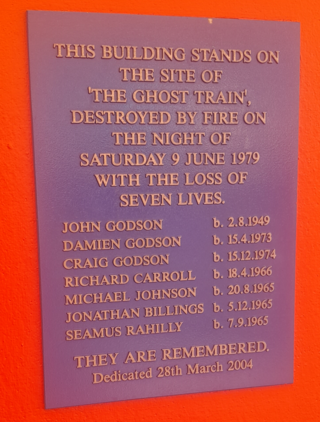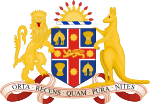
A coroner is a government or judicial official who is empowered to conduct or order an inquest into the manner or cause of death. The official may also investigate or confirm the identity of an unknown person who has been found dead within the coroner's jurisdiction.

The Sydney Hilton Hotel bombing occurred on 13 February 1978, when a bomb exploded outside the Hilton Hotel in George Street, Sydney, Australia. The hotel was hosting the first Commonwealth Heads of Government Regional Meeting (CHOGRM), a regional offshoot of the biennial meetings of the heads of government from across the Commonwealth of Nations.

The 2004 Redfern riots took place on the evening of Sunday 15 February 2004, in the inner Sydney suburb of Redfern, New South Wales, and were sparked by the death of 17-year-old Thomas Hickey, also known as TJ Hickey, resulting from a bike accident in the neighbouring suburb of Waterloo on 14 February 2004.
The Government of New South Wales, also known as the NSW Government, is the governing body of New South Wales, Australia. The executive government comprises 11 portfolios, led by a ministerial department and supported by several agencies. There are also a number of independent agencies that fall under a portfolio but remain at arms-length for political reasons, such as the Independent Commission Against Corruption and Electoral Commission. The state Executive Council, consisting of the governor and senior ministers, exercises the executive authority through the relevant portfolio.
Courthouses in New South Wales were designed by the Colonial Architect, later known as the Government Architect of New South Wales, Australia.
The Coroner's Court of Western Australia is a court which has exclusive jurisdiction over the remains of a person and the power to make findings in respect of the cause of death of a person in Western Australia.
The name of "Coroners Court" is the generic name given to proceedings in which a Coroner holds an inquest in Victoria.
The Coroners Court of Tasmania is the generic name given to the Coronial Division of the Magistrates Court of Tasmania. It is a court which has exclusive jurisdiction over the remains of a person and the power to make findings in respect of the cause of death of a person, a fire or an explosion in Tasmania.

The Coroner's Court of South Australia is a court which has exclusive jurisdiction over the remains of a person and the power to make findings in respect of the cause of death of a person or fire in South Australia, a state of Australia.

The Coroner's Court of the Australian Capital Territory is a court which has exclusive jurisdiction over the remains of a person and the power to make findings in respect of the cause of death of a person or fire in Australian Capital Territory.
The title of Coroners Court is the name given to proceedings in which a coroner holds an inquest or an inquiry in the Northern Territory.
Mary Stella Jerram is a former State Coroner of New South Wales. Jerram was made a Member of the Order of Australia (AM) in the Honorary Division in the 2018 Australia Day Honours: "For significant service to the law in New South Wales as State Coroner, and as a role model for women in the legal profession."

The Sydney Ghost Train fire at Luna Park Sydney in Milsons Point, New South Wales, Australia killed seven people on 9 June 1979. Inadequate fire-fighting measures and low staffing caused the fire to completely destroy the amusement park's ghost train.
The New South Wales Premier's Department, a department of the New South Wales Government, is responsible for leading the New South Wales public sector to deliver on the Government's commitments and priorities. The department provides administrative support that enables the cabinet to identify, design and implement a coordinated policy, project and reform agenda that boosts the efficiency, productivity and effectiveness across the State. The department consults and work closely with other New South Wales government departments, the Commonwealth Government, local government, business and the community to ensure responses to community needs are effective.
John Birley Abernethy is a former State Coroner of New South Wales.

Solicitor General for New South Wales, known informally as the Solicitor General, is one of the Law Officers of the Crown, and the deputy of the Attorney General. They can exercise the powers of the Attorney General in the Attorney General's absence. The Solicitor General acts alongside the Crown Advocate, and Crown Solicitor, and serves as one of the legal and constitutional advisers of the Crown and its government in the Australian state of New South Wales.
Patricia Anne Bergin is a former judge of the Supreme Court of New South Wales.

The Old Coroner's Court, The Rocks are heritage-listed shops and the site of the former The Rocks Visitors Centre, a former morgue, the former Coroner's Court of New South Wales and offices located at 102–104 George Street, in the inner city Sydney suburb of The Rocks in the City of Sydney local government area of New South Wales, Australia. It was designed by Walter Liberty Vernon and built from 1906 to 1908. It is also known as Coroner's Court (former) - Shops & offices, Coroners Court / City Morgue and shops and offices. The property is owned by Property NSW, an agency of the Government of New South Wales. It was added to the New South Wales State Heritage Register on 10 May 2002.










